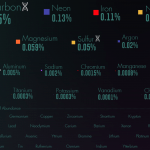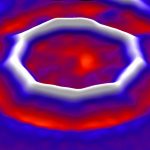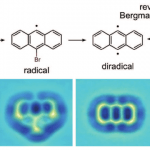What is the color of oxygen? Why we, including all forms of life, cannot live without it? What is so special about this element? You may have asked these questions yourself – and so have many others.

Indeed, oxygen is one of the most abundant chemical elements on the planet, and it has been baffling scientists since its official discovery in 1773 by Carl Wilhelm Scheele and Joseph Priestley, independently. You will know why I said official when we get to the some facts about oxygen later.
Associated with the chalcogen group, molecular oxygen, dioxygen, or O2, is an extremely volatile covalent compound.
As obvious as it may seem, the discovery of oxygen was key for the development of chemical science: In fact, the process of abstracting electrons from a molecule, known as the chemical process of oxidation, takes its name from this element. This is due to the fact that elemental oxygen has the capacity of forming “oxides” with most chemical elements.
Technically, it is also the third most abundant element in the universe, trailing behind hydrogen and helium, respectively.
Hence, in this article, you will learn several facts about this fascinating chemical element. We want to get into its photochemical properties (i.e. its color). But also, you will hopefully discover new things to add up to your knowledge. Let’s get started.
General Properties of Oxygen
First off, we will take a look into molecular oxygen’s physical and chemical properties.
Oxygen is a colorless and tasteless gas at normal circumstances. This chemical compound is virtually odorless. People have stated, however, that it is actually possible to distinguish between air or pure oxygen. If the odor of oxygen does exist, we may not smell it because of olfactory fatigue.

Os we already mentioned, the most common form of that the element oxygen takes is that of molecular oxygen, dioxygen, or simply O2.
Dioxygen molecules, which are found in gas form under standard conditions, are composed by two atoms of oxygen which are bound through a covalent bond to one another.
However, oxygen is not always in a gas form.
… [Read More]




